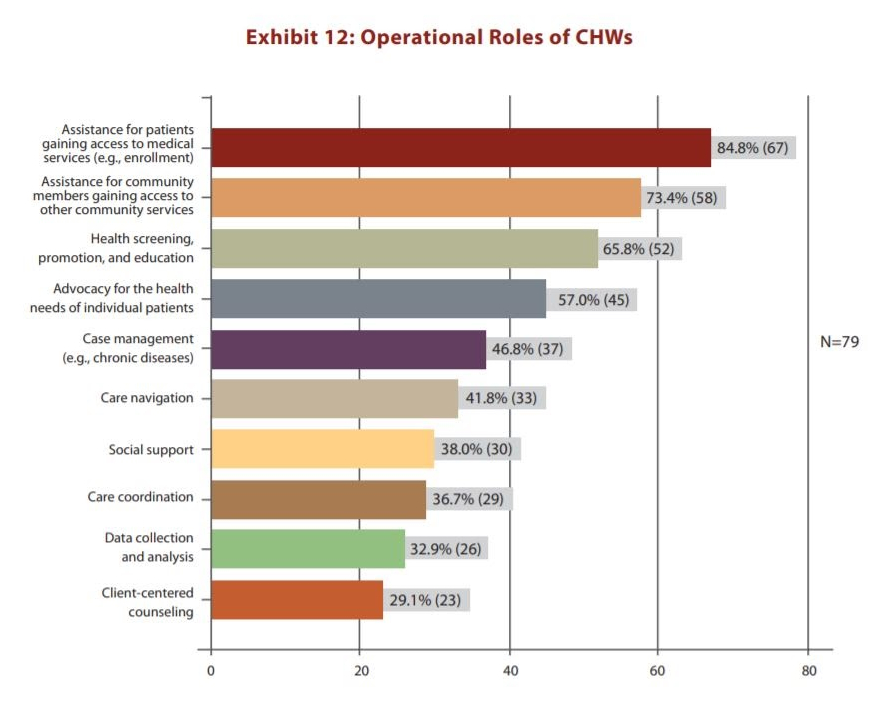Elevating the Role of Community Health Workers
Highlights

Two reports from PHI's California Health Workforce Alliance demonstrate that health care systems could benefit from deepening their work with community health workers.
42% reductions in avoidable emergency department visits due to the work of community health workers.
4 to 1 return on investment to health care systems from investments in community health workers.
-
Focus Areas
Capacity Building & Leadership, Health Care & Population Health -
Issues
Population Health
The Affordable Care Act (ACA) encourages adoption of new models of primary care and community health interventions. One strategy to improve community health is through the use of community health workers and promotores (CHWs). CHWs are trusted members of communities (in the case of promotores, typically Latinx communities) who work directly with health care providers or partner organizations to deliver health related services. This trusting relationship with the community enables CHWs to serve as a liaison between health and social services and the community to increase access to services and improve the quality and cultural competence of services delivered.
CHWs are among the best resources hospitals have to improve population health. In December 2013, the California Health Workforce Alliance (CHWA), a PHI program, published their survey of health care safety net providers statewide. The survey found that CHWs can reduce avoidable emergency department visits by 42%, ensure that more patients keep their medical appointments, improve health outcomes and deliver an impressive 4:1 return on investment.
 But CHWA’s survey also found that while nearly two-thirds of the state’s health care safety net providers use CHWs, most have a limited understanding of the roles that CHWs can play in promoting healthier communities. For example, most facilities mentioned using CHWs to help patients gain access to medical care or community services, but far fewer noted using them for care coordination, care navigation, or data collection.
But CHWA’s survey also found that while nearly two-thirds of the state’s health care safety net providers use CHWs, most have a limited understanding of the roles that CHWs can play in promoting healthier communities. For example, most facilities mentioned using CHWs to help patients gain access to medical care or community services, but far fewer noted using them for care coordination, care navigation, or data collection.
Following up on the initial survey, CHWA developed a report including recommendations to hospitals for improving community health by strengthening the role of CHWs. The 2015 report, “Community Health Workers in California: Sharpening Our Focus on Strategies to Expand Engagement,” calls for improvements in training programs and certification standards, developing mobile data collection and case management technologies for use by CHWs, standardizing metrics to evaluate the contributions of CHWs and other practical steps.
Work With Us
You change the world. We do the rest. Explore fiscal sponsorship at PHI.
Support Us
Together, we can accelerate our response to public health’s most critical issues.
Find Employment
Begin your career at the Public Health Institute.
